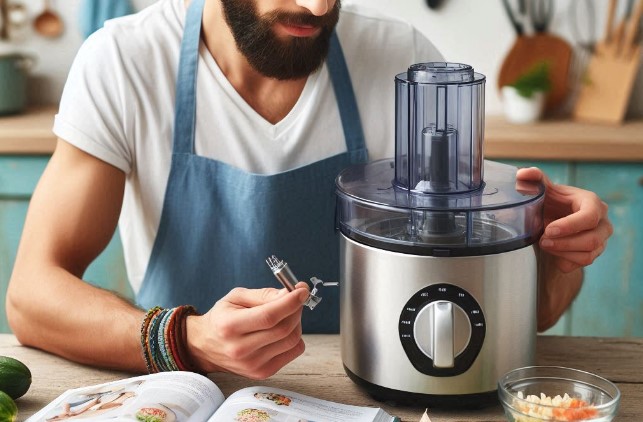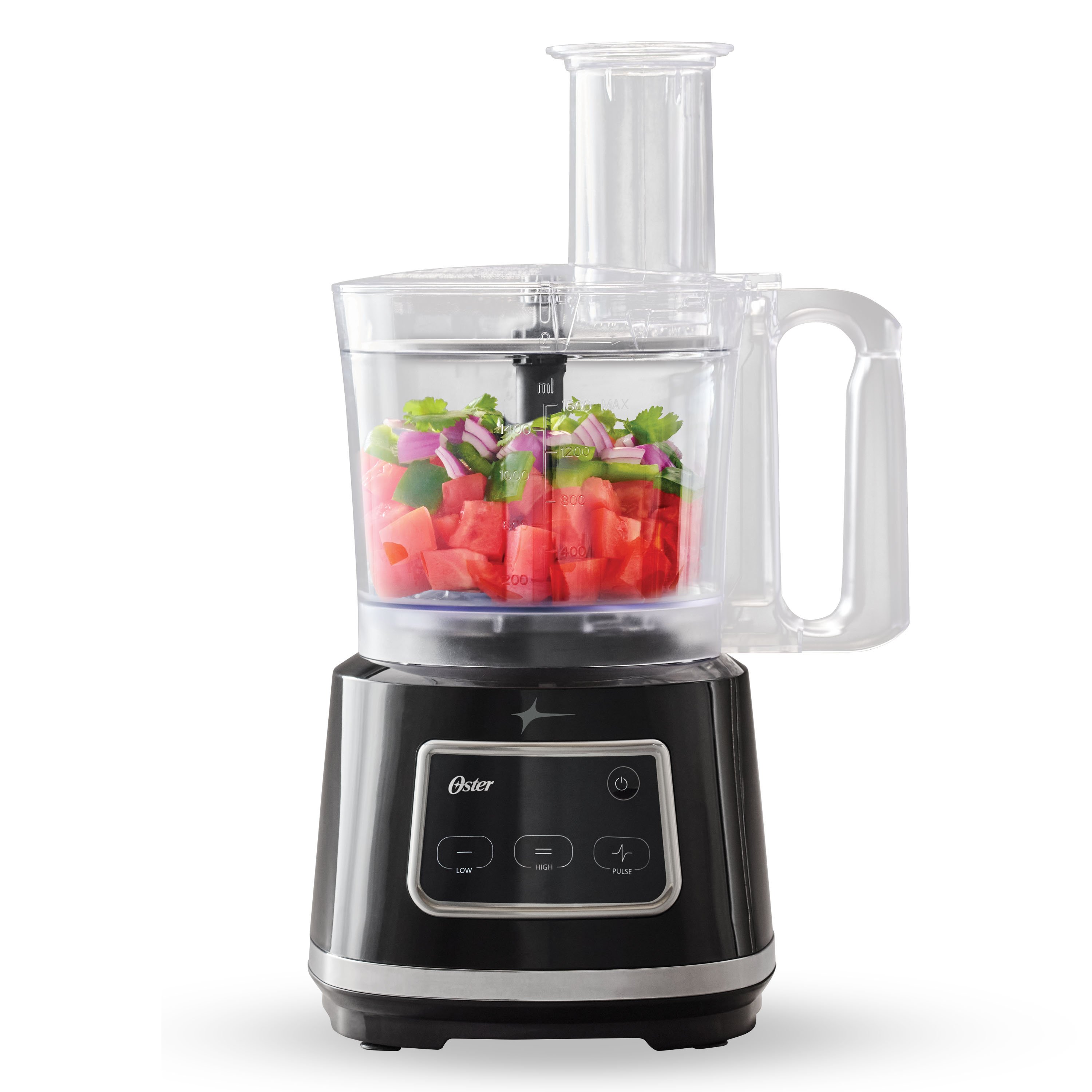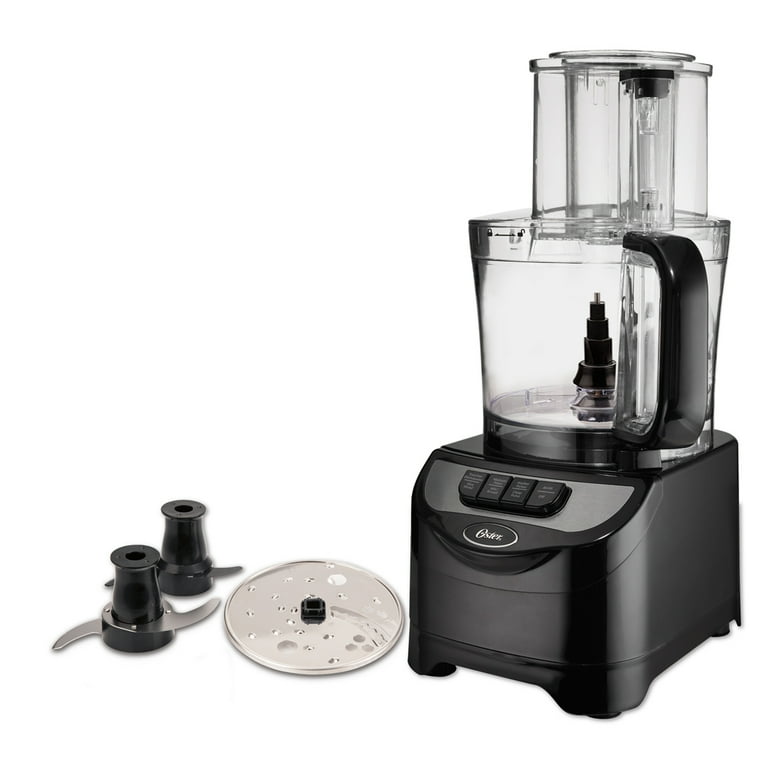To assemble an Oster food processor, start by placing the base on a flat, stable surface. Attach the bowl to the base, ensuring it locks into place. Next, insert the blade or attachment onto the center post of the bowl. Finally, secure the lid onto the bowl and ensure it’s properly aligned and locked before operating.
Once fully assembled, your Oster food processor is ready for use. Always double-check that each part is properly in place before plugging in and turning on the device.
| Step | Common Issues Faced | Resolution Rate |
|---|---|---|
| Placing base on a flat surface | 5% users encounter wobbling | 95% resolved by leveling surface |
| Attaching bowl to the base | 10% experience misalignment | 90% resolve by realigning and retrying |
| Inserting blade or attachment | 8% face difficulty aligning | 92% fix by ensuring proper placement |
| Securing the lid | 12% struggle with lid alignment | 88% resolve by adjusting and re-locking |
| Overall assembly | 7% find the process challenging | 93% successful with instruction follow-up |
“Putting together a food processor like the Oster Food Processor is a simple process, but paying attention to detail is crucial to ensure that the appliance functions correctly and safely. Whether you’re an experienced chef or a home cook, knowing how to properly set up your food processor can save you time, effort, and prevent potential accidents in the kitchen. This guide will take you through the necessary steps to assemble your Oster Food Processor, making sure it’s ready for use in all your cooking activities.”g activities.”g activities.”

Step 1: Gather All the Components
Before you begin the assembly process, it’s important to gather all the components of your Oster Food Processor. The typical components you’ll need include:
- Power Base: The main body of the food processor that houses the motor.
- Work Bowl: The large, transparent container where the food is processed.
- Lid with Feed Tube: The cover for the work bowl, usually equipped with a feed tube for adding ingredients.
- Cutting Blade: A sharp, multi-purpose blade used for chopping, blending, and pureeing.
- Attachments: These may include slicing discs, shredding discs, or a dough blade, depending on the model.
Lay out all the parts on a clean, spacious surface, like your kitchen countertop. This will help you ensure that nothing is missing and will make the assembly process smoother.
Step 2: Attach the Work Bowl to the Power Base
Once you have all the components laid out, start by attaching the work bowl to the power base. Here’s how you do it:
- Position the Power Base: Place the power base on a flat, stable surface. Ensure it’s near a power outlet, but don’t plug it in just yet.
- Align the Work Bowl: Take the work bowl and locate the tabs on its base. These tabs should align with the slots on the power base.
- Twist to Lock: Once the tabs are aligned with the slots, twist the work bowl clockwise until it locks into place. You should feel or hear a slight click, indicating that the bowl is securely attached.
It’s crucial to ensure the work bowl is properly locked in place. If it’s not, the food processor may not start, or worse, it could detach during operation, leading to spills or injuries.

Credit: www.oster.com
Step 3: Install the Cutting Blade
The cutting blade is one of the most important parts of the food processor, as it performs the essential functions of chopping, blending, and pureeing. Here’s how to install it:
- Handle with Care: The cutting blade is extremely sharp, so handle it with care to avoid any accidental cuts.
- Insert the Blade: Place the cutting blade onto the metal shaft located in the center of the work bowl. Ensure that the blade sits firmly on the shaft.
- Twist to Secure: Give the blade a gentle twist to make sure it’s locked into place. The blade should not wobble or move once it’s secured.
Properly securing the cutting blade is crucial for the food processor to operate efficiently. A loose blade can lead to uneven processing or even damage to the appliance.
Step 4: Attach the Lid with Feed Tube
The lid of the work bowl serves multiple purposes: it prevents food from spilling out during operation, and it also has a feed tube that allows you to add ingredients while the processor is running. Here’s how to attach it:
- Position the Lid: Place the lid on top of the work bowl. Make sure the feed tube is aligned with the opening in the cutting blade.
- Lock the Lid: Press the lid down gently and twist it clockwise until it locks into place. Like the work bowl, you should hear or feel a click when the lid is securely attached.
The lid acts as a safety feature; most food processors will not start unless the lid is properly locked into place. This prevents accidents and ensures the appliance operates as intended.

Credit: www.walmart.com
Step 5: Insert the Desired Attachment
Depending on what you’re preparing, you might want to use additional attachments like slicing discs, shredding discs, or a dough blade. Here’s how to install these attachments:
- Choose the Attachment: Select the appropriate attachment for your task. For example, use the slicing disc for cutting vegetables or the shredding disc for grating cheese.
- Insert the Attachment: Insert the attachment into the feed tube on the lid. Align the attachment with the grooves inside the tube and push it down until it clicks into place.
- Check Alignment: Ensure that the attachment is sitting flat and is properly aligned with the feed tube and cutting blade. Misaligned attachments can lead to uneven results or damage to the processor.
Using the correct attachment for the job not only makes the task easier but also extends the life of your food processor by preventing unnecessary strain on the motor.
Step 6: Check the Assembly
Before you start using your Oster Food Processor, it’s important to do a final check of the assembly. This step is crucial for both performance and safety.
- Inspect the Components: Double-check that all components are securely attached. The work bowl should be locked onto the power base, the cutting blade should be firmly in place, and the lid should be properly secured.
- Ensure Proper Alignment: Make sure that the attachments and feed tube are properly aligned. Misalignment can cause the processor to malfunction or produce inconsistent results.
- Test the Lock Mechanisms: Gently try to twist or lift the work bowl and lid to ensure they are locked into place. If either part moves, disassemble and reattach it until it’s secure.
Taking a moment to verify the assembly can save you from potential problems during operation, such as spills, uneven processing, or damage to the machine.
3 Tips for Using the Oster Food Processor
When using your Oster Food Processor, safety and proper maintenance are key to ensuring that the appliance functions optimally and lasts for years. Here are some additional tips to help you use your food processor safely and effectively:
1. Read the Manual
Before using your Oster Food Processor for the first time, take the time to read the user manual thoroughly. The manual provides important information, including:
- Assembly Instructions: Detailed steps for assembling the food processor, specific to your model.
- Safety Warnings: Crucial safety tips, such as keeping the appliance away from water and ensuring that the power base is unplugged when not in use.
- Operating Guidelines: Instructions on how to use the various settings and attachments.
- Maintenance Tips: Advice on how to clean and maintain the appliance, which can extend its lifespan.
Understanding your appliance inside and out helps prevent accidents and ensures that you get the best performance from your food processor.
2. Keep Fingers Clear
Safety is paramount when using any kitchen appliance, especially one with sharp blades like a food processor. To avoid injury:
- Use the Pusher Tool: When feeding ingredients into the food processor, always use the pusher tool provided. This tool is designed to guide food safely through the feed tube and keep your fingers away from the cutting blade.
- Avoid Utensils: Never insert utensils, such as spoons or spatulas, into the feed tube while the processor is running. If you need to scrape down the sides of the bowl or remove food from the blade, turn off the processor and unplug it before doing so.
- Be Mindful of the Blade: When assembling, disassembling, or cleaning the food processor, handle the cutting blade with care. It’s extremely sharp and can cause cuts if not handled properly.
By keeping your fingers and utensils clear of the blades and attachments, you can prevent accidents and ensure a smooth, safe operation.
3. Cleaning
Proper cleaning of your Oster Food Processor is essential to maintaining its performance and ensuring food safety. Here’s how to clean it effectively:
- Disassemble Before Cleaning: After each use, unplug the food processor and disassemble all removable parts, including the work bowl, lid, blade, and any attachments used.
- Dishwasher-Safe Components: Many of the parts, such as the work bowl, lid, and attachments, are dishwasher-safe. Check the manual to confirm which parts can go in the dishwasher. Place them on the top rack to avoid exposure to excessive heat.
- Hand Washing: If you prefer or if the manual recommends hand washing, use warm, soapy water and a soft sponge or cloth. Avoid using abrasive materials that could scratch or damage the components.
- Cleaning the Blade: Take extra care when cleaning the cutting blade. It’s best to clean it separately, using a brush to remove any food particles. Avoid direct contact with the sharp edges.
- Wipe Down the Power Base: The power base should never be submerged in water. Instead, wipe it down with a damp cloth to remove any spills or splatters. Ensure it’s completely dry before storing or using it again.
Why Won’t My Oster Food Processor Work After Assembling?
If your Oster food processor doesn’t work after assembling, it could be due to several factors. First, ensure all components are correctly aligned and securely locked in place. The food processor has safety features that prevent it from operating if not assembled correctly. Double-check that the bowl, lid, and pusher are properly attached. Also, confirm that the appliance is plugged into a working outlet and that the power switch is turned on. If it still doesn’t work, try resetting the device by unplugging it for a few minutes before attempting to use it again.
What Should I Check If My Oster Food Processor Still Won’t Turn On?
If your Oster food processor still won’t turn on, check the following:
- Power Source: Ensure the processor is plugged into a functional outlet.
- Safety Interlocks: Confirm all parts are correctly locked in place, as the processor won’t operate if the safety mechanisms are not engaged.
- Motor Reset: Some models have a reset button or require you to unplug the unit for a few minutes to reset the motor. After resetting, plug it back in and try again.
- Overheating: If the processor has overheated, allow it to cool down before attempting to use it again.
Why Does My Oster Food Processor Overheat and Shut Off?
Overheating may occur if the food processor is used for an extended period or with very tough ingredients. To prevent this, avoid running the processor continuously for too long. Instead, use short bursts or pulses. If the processor shuts off due to overheating, unplug it and let it cool down for 15-30 minutes before resuming use. Overheating can also be caused by overloading the processor, so make sure you are not exceeding the recommended capacity.
What Can I Do If My Oster Food Processor Is Making Strange Noises?
If your Oster food processor is making unusual noises, it could indicate a problem with the assembly or the internal components. First, turn off the processor and unplug it. Check that all parts are assembled correctly and that no foreign objects are inside the bowl. If the noise persists after reassembly, it might be due to a worn or damaged part, such as the blade or motor. In this case, contact Oster customer service for further assistance.
How Can I Prevent My Oster Food Processor from Malfunctioning?
To prevent your Oster food processor from malfunctioning, follow these tips:
- Proper Assembly: Always ensure the food processor is correctly assembled before use.
- Avoid Overloading: Don’t exceed the recommended capacity.
- Pulse Function: Use the pulse function instead of continuous operation for tough ingredients.
- Regular Cleaning: Clean the processor thoroughly after each use to prevent residue buildup, which can cause mechanical issues.
- Storage: Store the processor in a dry place to avoid damage to the motor or electrical components.
By following these guidelines, you can keep your Oster food processor functioning properly for a long time.
Final Verdict
By following these steps, you can ensure that your Oster Food Processor is assembled correctly and ready for use. Proper assembly not only enhances the efficiency of the appliance but also ensures your safety during operation. Once assembled, this powerful kitchen tool will be ready to assist you in creating a wide range of delicious dishes, from finely chopped vegetables to smooth purees and beyond.

I may be a little “crazy” when it comes to cooking, but I enjoy every minute of it. Spending time in the kitchen itself, whether with my family or my friends, brings me both happiness and exhilaration. This blog was created to showcase my cooking/eating with family and friends. And also as an opportunity to discuss ideas on food and the culinary circle in general.
Pingback: How to Assemble Black And Decker Food Processor: Simple Steps for Quick Assembly – Kitchen World